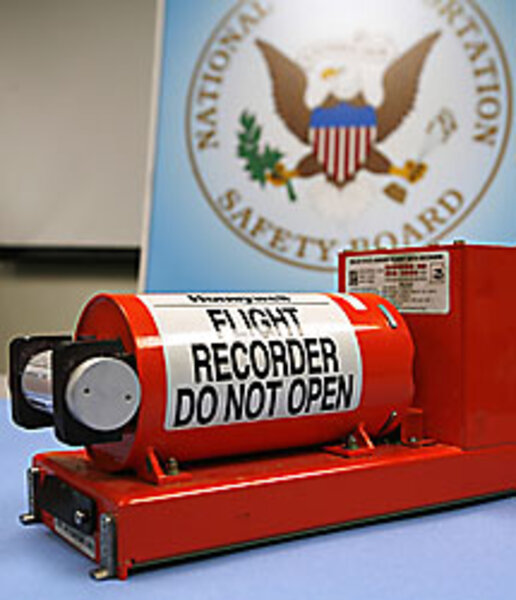Buffalo plane crash raises broader issues on icing
Federal investigators are focusing on icing and the autopilot as they try to determine the cause of last week's fiery plane crash outside Buffalo, N.Y., that took 50 lives.
That's prompted a debate in aviation circles over whether the aircraft should have been on autopilot when it was evident the conditions were icy.
Some aviation experts say that relying on the autopilot kept the pilots from sensing the seriousness of the icing conditions, which could have caused the plane to lurch erratically in the 26 seconds before it crashed.
The National Transportation Safety Board (NTSB) is withholding judgment, and it could take several months before it reaches a final determination.
That exhaustive investigation into the cause of the crash is one of many factors that has helped make aviation in America still one of the safest modes of transportation.
The crash of Continental Connection Flight 3407 ended a two-year run with no fatalities in commercial aviation. That was a milestone in the past 50 years of commercial aviation.
"The reason we're seeing a lot fewer of these accidents is that we're getting better at understanding what leads up to these accidents in advance," says William Voss, president and CEO of the Flight Safety Foundation, a nonprofit international research foundation in Alexandria, Va.
Over the past decade, the management of safety issues has evolved. In the past, safety improvements were often the result of a tragedy: After an accident occurred, investigators looked backward to see what went wrong and made recommendations to prevent similar problems in the future. But now, investigators plumb everyday data to look for problems and try to catch them before they result in a tragedy.
"We are proactively looking for those red flags that go up in advance," Mr. Voss says. "We're actually taking data from minor incidents and problems all the way to data from normal flights and analyzing it and looking for anomalies to get the precursor information that tells us about crashes that could occur or trends we don't like."
As a result of that kind of precursor analysis, the problem with icing was on the NTSB's radar screen as recently as two months ago. In December 2008, the agency released a safety alert that stated: "Thin amounts of ice, as little as 1/4 inch, can be deadly." Such small amounts of ice can have an impact on the handling of a plane. But if it's on autopilot, the impact can be minimal, leading pilots to become "over confident."
A pilot and safety expert who is not authorized to speak to the press says that in older planes that were bulkier and had less power, a problem with ice was easily identifiable in the way it affected the handling of the plane.
"We now design the planes with super-powerful computers, and the airfoils [the shape of the wing] are extremely efficient. The downside of that is that [the airfoils are] not nearly as tolerant to deformation by ice," says the pilot. "You also have these turbine engines putting out thousands of horsepower, and they're way more powerful than they used to be for a plane that size. So you can stay aloft in these things, and icing doesn't become an issue until you prepare to land."
In its safety alert, the NTSB recommends that de-icing systems be activated as soon as "icing is encountered." The pilots of Flight 3407 had turned on the plane's sophisticated de-icing system soon after they left Newark, N.J., according to investigators. But they had also put the plane on autopilot, a move the safety alert warns against. "Turn off or limit the use of the autopilot in order to better 'feel' changes in the handling qualities of the airplane," says the alert.
As Flight 3407 approached the Buffalo area, other planes nearby also reported some problems with icing, but none reported that it was severe.
Also, aviation experts say, it's not unusual to use an autopilot that close to an airport when the crew is planning what's called an "instruments approach."
"There is a trade-off in that the autopilot can help with the workload that the pilots have as they're coming in close, making altitude changes in response to air-traffic control and setting up for instrument approaches. So it has a constructive role to play," says Clint Oster, an aviation safety expert at Indiana University at Bloomington. "The question is, When do you decide you need to be hand-flying the plane so that you can be more attuned to what is happening because of something like an ice buildup?"





